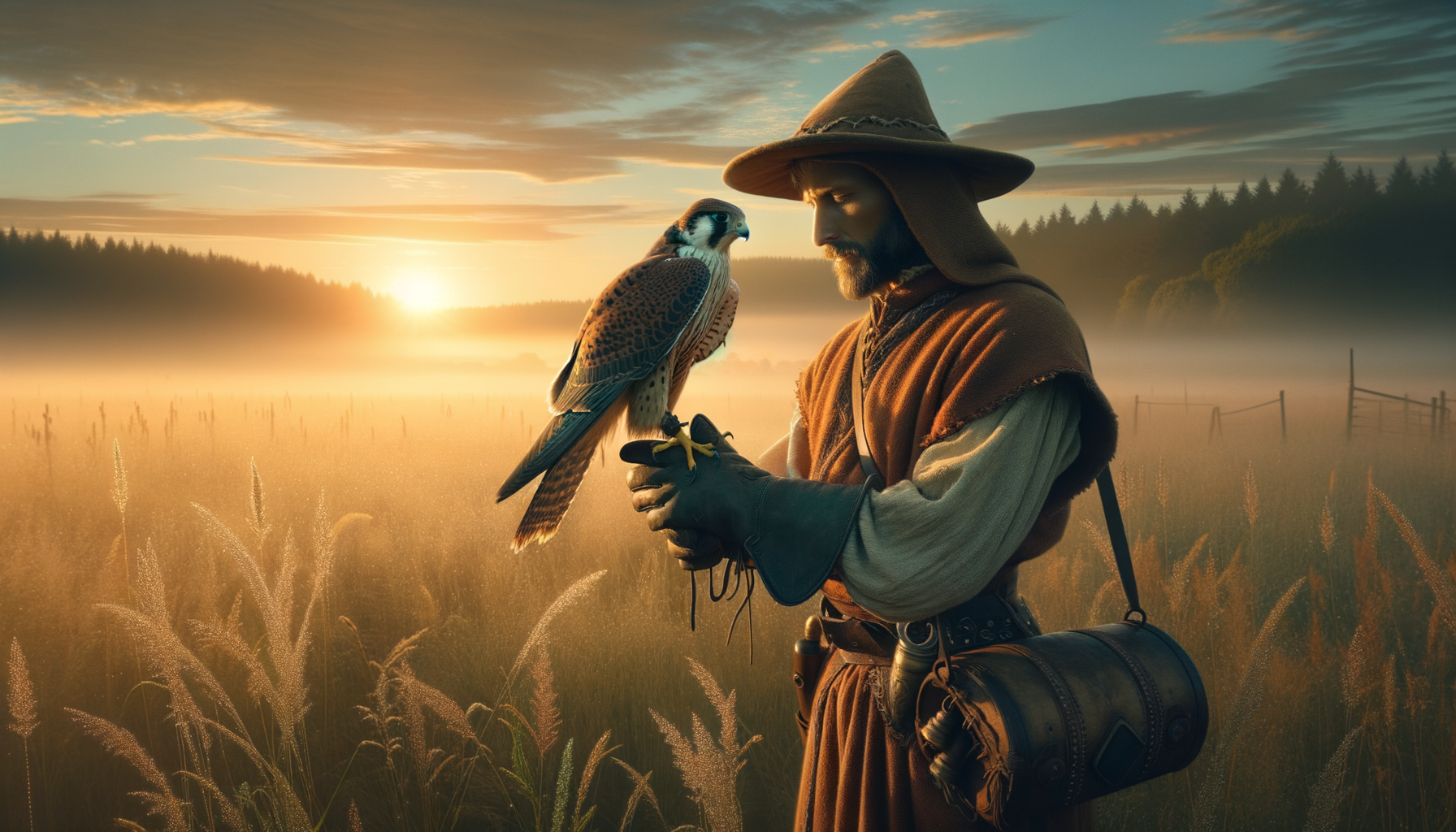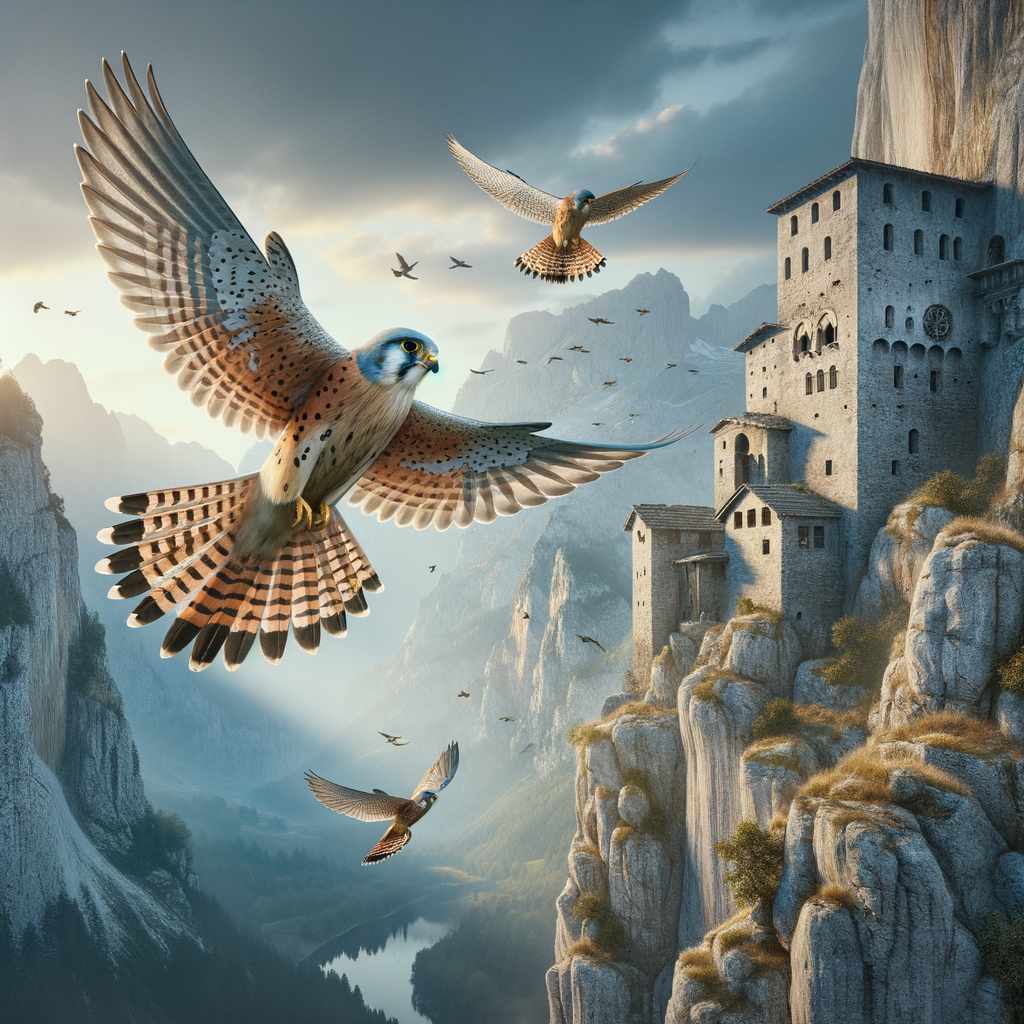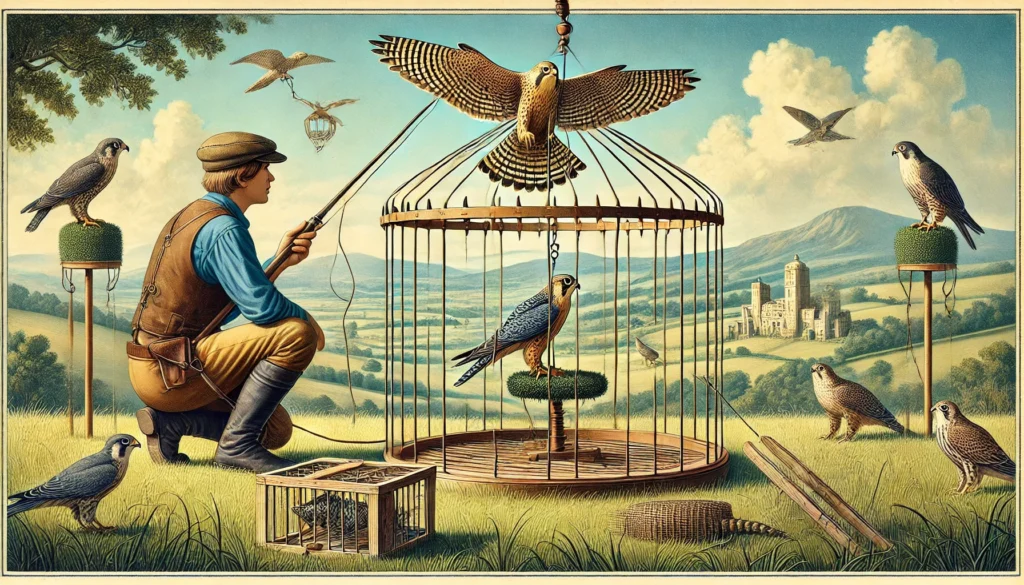Fascinating Facts About the Ancient Art of Falconry
- Falconry is one of the oldest forms of hunting, dating back over 4,000 years.
- Ancient cultures such as the Egyptians, Persians, and Mongolians practiced falconry.
- Falcons and other birds of prey were highly respected and seen as symbols of power.
- Falconry was more than just hunting; it was a way to bond with nature and train majestic birds.
- The practice involves a deep understanding of bird behavior and specialized training techniques.
- Falconers use leather gloves, hoods, and other equipment to handle and care for their birds.
- Many famous historical figures, including royalty, were passionate falconers.
- Falconry is recognized today as an important cultural heritage, and efforts are being made to preserve it for future generations.
The Enchanting World of Ancient Falconry: Discovering Its Origins and Importance
Imagine wandering through the misty hills of Ireland, where legends and history whisper through the ancient oak trees. Just as the Irish have a rich tradition of storytelling that connects their past to the present, the practice of falconry spans centuries’uniting us with our ancestors, who once relied on the skies for companionship and survival.
Welcome to Learn Falconry, your gateway to the captivating world of this age-old art. In the times of old, falconry was more than just training birds of prey; it was a harmonious dance between humans and nature. Think of it like the ancient Irish sagas told around a warm hearth’each story, each technique, passed down through generations, preserving the wisdom and skills required to master the craft.
As you read on, you’ll uncover the mystique surrounding falconry’s ancient origins. We’ll share tales of emperors and nomads, of noble falcons and their brave human partners. By understanding these roots, you’ll see why this practice is not just about sport or survival; it’s a beautiful tradition that links us to a time when our bond with the natural world was woven into the very fabric of our lives.
So, stay with us as we journey through history, explore the cultural significance, and uncover the timeless allure of falconry. Just as the Irish weavers create intricate patterns that tell stories, we’ll unravel the rich tapestry of falconry’s past and its enduring magic. Happy reading!
Exploring the Ancient Origins of Falconry
Falconry, the art of training birds of prey to hunt, is a practice that dates back thousands of years. Understanding the ancient falconry origins provides a fascinating glimpse into humanity’s connection with nature and the evolution of our relationship with animals. Let’s dive into the early falconry history and discover how it all began.
The Dawn of Falconry
The origins of falconry can be traced back to ancient civilizations where humans first began domesticating birds of prey for hunting purposes. Evidence suggests that ancient falconry dates back over 4,000 years. It is believed to have started in Mesopotamia and Ancient Egypt, where it quickly became a vital part of their culture. Discover more about Falconry in Ancient Egypt.
Early Falconry History
In Mesopotamia, as early as 2000 BC, ancient art and scripts illustrate the significance of falconry in daily life. The Sumerians, who inhabited Mesopotamia, revered falcons and often depicted them in carvings and pottery. These depictions provide valuable insights into the early falconry history and how it was revered among ancient cultures. Learn more about the History of Falconry.
Meanwhile, in Ancient Egypt, falconry was not only a practical hunting method but also held a spiritual significance. The Egyptian god Horus, often depicted as a falcon-headed deity, symbolized the sky, war, and hunting. Ancient Egyptians believed that falcons represented strength and protection.
Falconry in Ancient Civilizations
As time passed, falconry spread to other civilizations. In the Middle East, falcons became a symbol of status and power among rulers and nobility. Persian and Arab falconers perfected many techniques that are still in use today. Read about Falconry in the Middle East.
In Asia, particularly in Mongolia and China, falconry played a crucial role in the livelihoods of nomadic tribes. For these communities, birds of prey were essential hunting partners that helped them survive in harsh environments. The sport eventually made its way to Japan, where it was adopted by the samurai. Discover how Falconry influenced Ancient Cultures.
Evolving Techniques and Equipment
Ancient falconers developed various techniques and equipment essential for the sport. Items like hoods, jesses, and lures were crafted to train and control the birds effectively. These early innovations laid the groundwork for modern falconry tools and practices. Explore Falconry Equipment.
Falconers meticulously trained their birds using positive reinforcement methods, which often involved food rewards and careful handling. Delve deeper into Training a Falcon to understand how these ancient methods have evolved over time.
Conclusion
What began as a practical means for hunting has grown into a respected art form with rich cultural significance. From the deserts of Mesopotamia to the steppes of Mongolia, the early falconry history showcases humanity’s ingenuity and respect for these majestic birds. Understanding the ancient origins of falconry not only helps us appreciate its history but also paves the way for preserving this timeless tradition.
Further Reading and Learning
To learn more about the fascinating world of falconry, check out these informative sections on our website:
Ancient Origins of Falconry
Falconry, the ancient sport of hunting with birds of prey, boasts a rich and storied past that spans countless civilizations and centuries. By training falcons, hawks, and sometimes eagles or buzzards, humans formed partnerships with these majestic birds to hunt game. The history of falconry is not only fascinating but also sheds light on human ingenuity and our relationship with nature.
Prehistoric and Ancient Beginnings
Falconry’s roots may trace back to preliterate times with some evidence found in stelae from the 13th century BCE and prehistoric cave paintings possibly hinting at early uses of birds of prey.
Early Evidence of Falconry
| Period | Evidence | Location |
|---|---|---|
| 13th Century BCE | Stelae depicting falconry | Mesopotamia |
| Prehistoric (exact period unknown) | Cave paintings potentially showing falconry | Various prehistoric sites |
Falconry in Ancient Civilizations
Various ancient civilizations practiced falconry, each infusing their unique cultural practices into the sport.
Ancient Mongolia
Mongolia’s contributions to falconry are significant, with evidence dating back around 1000 years BCE showing that falconry was highly esteemed.
Spain and Portugal
Falconry scenes appear in 3rd-century BCE imagery, indicating the sport’s popularity. Prosperity in Spain and Portugal was heavily influenced by Arab traditions, integrating the rich legacy of Arab falconry.
China
Falconry in China can be traced back to 2205 BCE. Historic records reveal that raptors were gifted as royal presents, showcasing the esteem held for these birds by ancient Chinese royalty.
Middle Ages and European Flourishing
During the Middle Ages, falconry thrived among the privileged classes in western Europe and the British Isles. Laws often dictated which species of birds could be owned by individuals of different social ranks.
| Civilization | Falconry Practices |
|---|---|
| Western Europe | Nobles widely practiced falconry during this period. |
| British Isles | Strict laws regulated which classes could use specific birds. |
Decline and Modern Revival
The advent of firearms and the loss of open lands caused falconry’s decline. However, it was reawakened in the 1970s, fueled by reprinted manuals, magazine articles, and television programs enlightening the public about this extraordinary sport.
| Era | Event |
|---|---|
| Post-Middle Ages | Decline due to shotguns and land enclosures |
| 1970s | Revival sparked by media and publications |
The revival of falconry reignited fascination with this ancient practice, ensuring that it remains a vibrant part of cultural heritage around the world.
The Timeless Journey of Falconry
Falconry is not just a sport; it’s a connection between humans and the majestic birds of prey that dates back thousands of years. From the ancient civilizations of Mesopotamia, China, Persia, Greece, and Rome, to the medieval kingdoms of Europe, falconry has been a symbol of skill, nobility, and the harmonious relationship between humans and nature. Each culture has contributed to the rich tapestry of falconry practices and traditions, showcasing its global spread and enduring appeal.
Today, falconry continues to captivate enthusiasts around the world. Modern-day falconers uphold the ancient traditions while advocating for the conservation of raptors and their natural habitats. Whether you’re attending a falconry demonstration, participating in a falconry fair, or simply learning about this ancient art, falconry offers a unique and thrilling way to appreciate the beauty and power of birds of prey.
So, as you delve into the world of falconry, remember that you are part of a timeless journey that has been cherished for centuries. Ready to take flight with us at Learn Falconry and explore the fascinating world of birds and humans working together? The adventure awaits!



